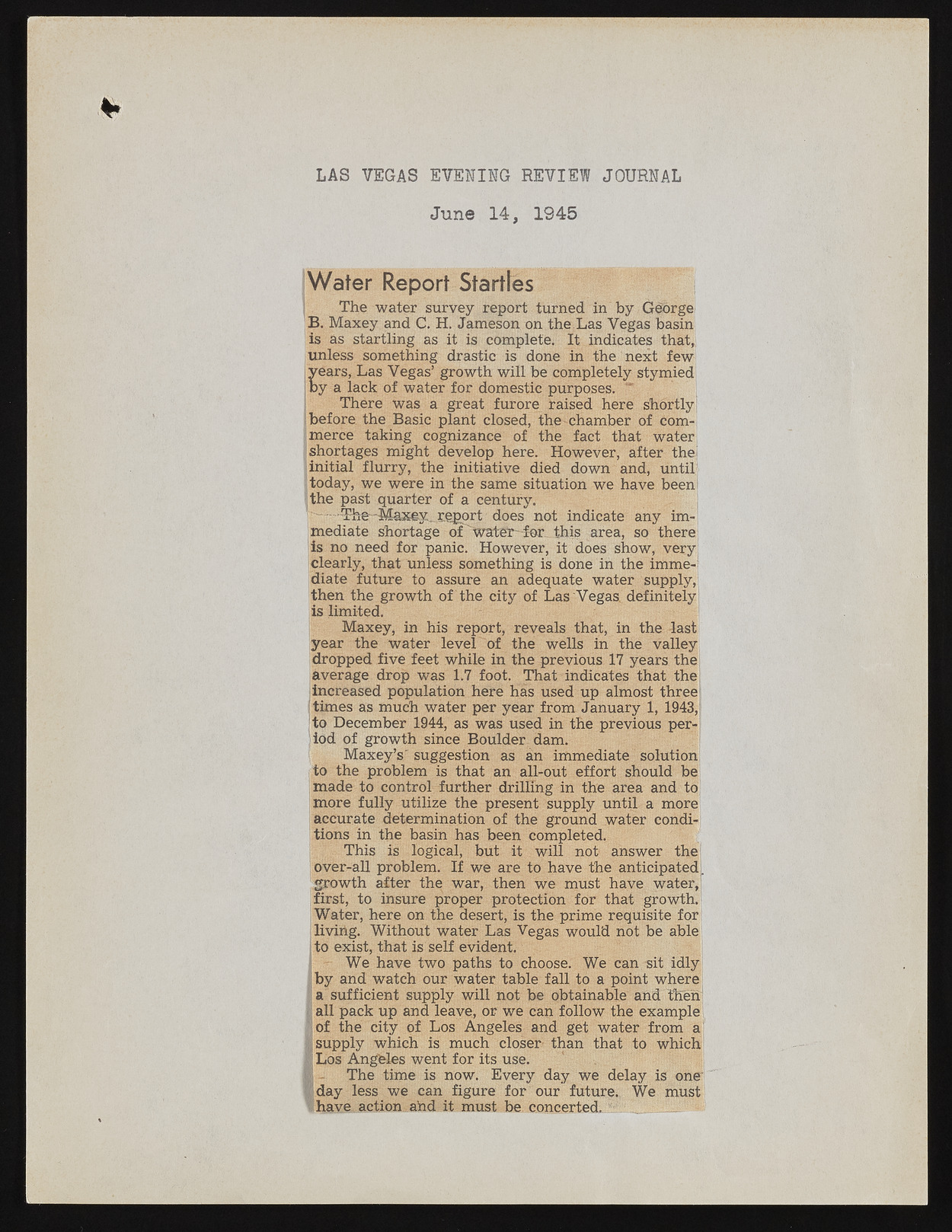Copyright & Fair-use Agreement
UNLV Special Collections provides copies of materials to facilitate private study, scholarship, or research. Material not in the public domain may be used according to fair use of copyrighted materials as defined by copyright law. Please cite us.
Please note that UNLV may not own the copyright to these materials and cannot provide permission to publish or distribute materials when UNLV is not the copyright holder. The user is solely responsible for determining the copyright status of materials and obtaining permission to use material from the copyright holder and for determining whether any permissions relating to any other rights are necessary for the intended use, and for obtaining all required permissions beyond that allowed by fair use.
Read more about our reproduction and use policy.
I agree.Information
Digital ID
Permalink
Details
Member of
More Info
Rights
Digital Provenance
Publisher
Transcription
LAS VEGAS EVENING REVIEW JOURNAL June 14, 1945 Water Report Startles The water survey report turned in by George B. Maxey and C. H. Jameson on the Las Vegas basin is as startling as it is complete. It indicates that, unless something drastic is done in the next few years, Las Vegas’ growth will be completely stymied iby a lack of water for domestic purposes. “ There was a great furore raised here shortly i before the Basic plant closed, the chamber of commerce taking cognizance of the fact that water shortages might develop here. However, after the1 [initial flurry, the initiative died down and, until today, we were in the same situation we have beeni the past quarter of a century. ...The-Maxey. report does not indicate any im-j mediate shortage of^water-for.. this area, so there is no need for panic. However, it does show, very clearly, that unless something is done in the immediate future to assure an adequate water supply,1 then the growth of the city of Las Vegas, definitely is limited. Maxey, in his report, reveals that, in the last year the water level of the wells in the valley dropped five feet while in the previous 17 years the average drop was 1.7 foot. That indicates that the increased population here has used up almost three times as much water per year from January 1, 1943, to December 1944, as was used in the previous period of growth since Boulder dam. Maxey’s' suggestion as an immediate solution to the problem is that an all-out effort should be made to control further drilling in the area and to more fully utilize the present supply until a more accurate determination of the ground water conditions in the basin has been completed. This is logical, but it will not answer the over-all problem. If we are to have the anticipated!, growth after the war, then we must have water,; ! first, to insure proper protection for that growth. Water, here on the desert, is the prime requisite for Jiviiig. Without water Las Vegas would not be able [to exist, that is self evident. We have two paths to choose. We can sit idly by and watch our water table fall to a point where s a sufficient supply will not be obtainable and then 1 all pack up and leave, or we can follow the example | of the city of Los Angeles and get water from a I supply which is much closer than that to which I Los Anghles went for its use. The time is now. Every day we delay is one i day less we can figure for our future. We must I have action ahd it must be concerted.

